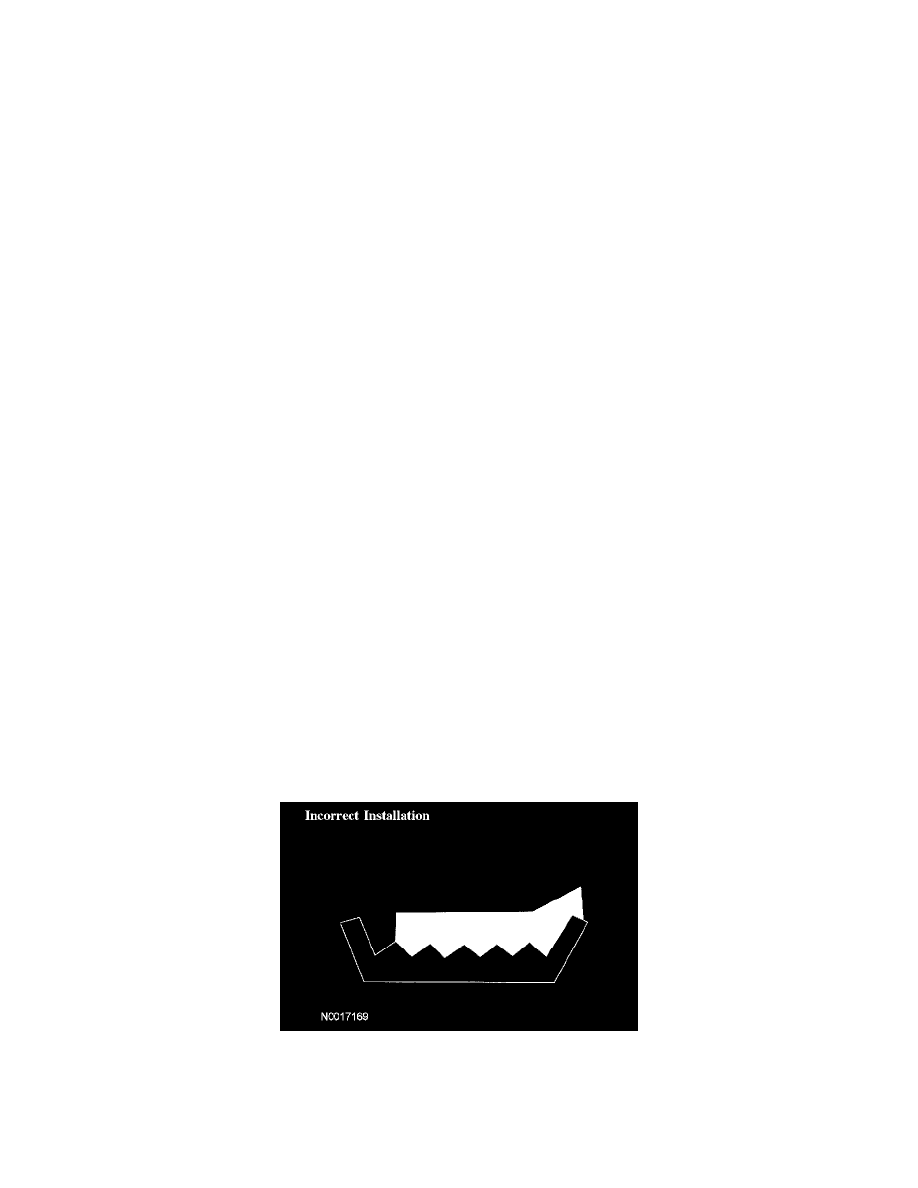F 150 2WD V8-4.6L VIN W (2007)

Drive Belt: Component Tests and General Diagnostics
Component Tests
Drive Belt - Noise/Flutter
Drive belt chirp occurs due to pulley misalignment or excessive pulley runout. It can be the result of a damaged or incorrectly aligned grooved pulley.
To correct, determine the area where the noise comes from. Check each of the pulleys in that area with a straightedge to the crankshaft pulley. Look for
accessory pulleys out of position in the fore/aft direction or at an angle to the straightedge.
CAUTION: Do not apply any fluids or belt dressing to the accessory drive belt or pulleys.
Drive belt squeal may be an intermittent or constant noise that occurs when the drive belt slips on an accessory pulley under certain conditions.
A short intermittent squeal may occur during engine start-up and shut down or during very rapid engine acceleration and decelerations, such as:
^
wide open throttle 1-2 and 2-3 shifts or 2-3 and 3-4 back out shifts on automatic transmissions.
^
wide open throttle 1-2 and 2-3 shifts and any combination of rapid downshifting on manual transmissions.
These special short-term transient events are expected, and are due to the higher system inertias required to meet the electrical and cooling demands on
today's vehicle systems. Constant or reoccurring drive belt squeal can occur:
^
if the A/C discharge pressure goes above specifications:
-
the A/C system is overcharged.
-
the A/C condenser core airflow is blocked.
^
if the A/C off equalized pressure (the common discharged and suction pressure that occurs after several minutes) exceeds specifications.
^
if any of the accessories are damaged or have a worn or damaged bearing. All accessories should be rotatable by hand in the unloaded condition. If
not, inspect the accessory.
^
if there is evidence of fluid contamination on the accessory drive belt. When the drive belt has been exposed to fluid contamination during vehicle
operation, such as leaks from the power steering system, A/C system or cooling system, clean all pulleys with soap and water, rinse with clean
water and install a new accessory drive belt. If the drive belt has been exposed to fluids in a localized area during routine vehicle service, such as
replacement of hoses or fluids, the drive belt and pulleys should be washed with soap and water immediately (prior to starting the engine), and
rinsed with clean water.
^
if the accessory drive belt is too long. A drive belt that is too long will allow the accessory drive belt tensioner arm to go all the way to the arm
travel stop under certain load conditions, which will release tension to the drive belt. If the accessory drive belt tensioner indicator is outside the
normal installation wear range window, install a new accessory drive belt.
^
NOTE: The accessory drive belt tensioner arm should rotate freely without binding.
Install a new accessory drive belt tensioner if the drive belt tensioner is worn or damaged.
Drive Belt - Incorrect Installation
CAUTION: Incorrect accessory drive belt installation will cause excessive drive belt wear and can cause the drive belt to come off the pulleys.
Non-standard accessory drive belts can track differently or incorrectly. If an accessory drive belt tracks incorrectly, install a new accessory drive belt to
avoid performance failure or loss of the drive belt.
Incorrect Installation
